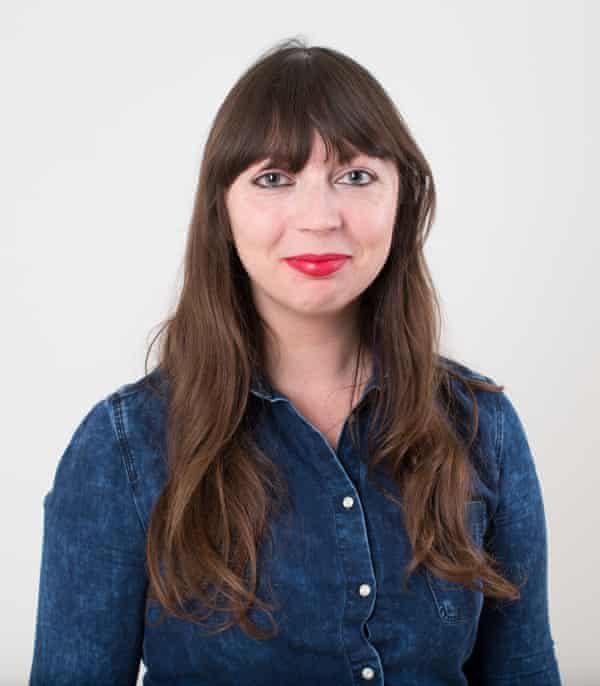‘Anxiety is part of me’: Mara Wilson and other anxious minds on how they cope
From lavender oil to a cold martini, Bruce Springsteen to sertraline, four writers share the tools they have found to manage their symptoms

Robyn Wilder
Of the nine most commonly diagnosed anxiety disorders on the Mind website, I’ve been diagnosed with seven. I realise this is a peculiar boast, but in case you’re wondering – hypochondria, a legitimate anxiety disorder in itself – isn’t among my diagnoses.

My first was agoraphobia with panic disorder, which came for me unexpectedly when I was 20, fresh out of university, and enjoying life as a guitar-wielding, purple-haired party girl (the home counties Courtney Love, only browner and more Sloaney). Suddenly, being in any enclosed public space – pubs, cinemas, train stations – would plunge me into visceral, suffocating episodes of vertigo. My stomach would spin, my vision turn dark at the edges, and I’d hurry for the safety of home. Soon I was experiencing these “episodes”, which I later learned were panic attacks, in even familiar locations. My local pub. My best friend’s living room.
By the time I was diagnosed, I was already helplessly housebound, couldn’t sleep, and had lost a third of my body weight.
Becoming a shut-in took a matter of weeks. My recovery, however, would take four years, one springer spaniel, a career change, some not-very-helpful analytical psychotherapy, and the gruelling but effective daily practice of pushing my boundaries with desensitisation therapy, in order to move around freely in the world again.
When I was able, I moved to London to restart my life. Though the agoraphobia subsided, anxiety remained an issue. Subsequent diagnoses included generalised anxiety disorder, social anxiety, both perinatal and postnatal anxiety, plus two lots of PTSD as a result of two emergency C-sections.
Finally, I was coping with work, parenting and the creeping dread of 2020’s first lockdown until my mother died of Covid, triggering my agoraphobia to return after 20 years in remission, and I developed a compulsive skin-picking disorder to boot.
So what works for me? I have learned that the wrong therapy can harm you. I’ve never got on with therapist-ordained CBT or mindfulness exercises, which it transpires can actively harm people with ADHD and PTSD. Now I ask for proof that new therapists are informed about all my conditions. I can’t believe it took a pandemic to show me that accessing therapy from home via Zoom is more helpful for agoraphobics.
Chronic anxiety and agoraphobia recovery means I’ve been living at Defcon 1 for ever, but I know that it is essential to establish my baseline comfort level. Rest, reading, favourite bands – these are all foreign concepts. Instead, I’m starting with macro-level pleasures, noting down the smallest things that give me joy, and building on them. Marie Kondo is not among them.
Reasons to be Fearful by Robyn Wilder will be published by Ebury Books.
Mara Wilson
I’ve experienced all kinds of anxiety, from heart-pounding, nauseating panic attacks, to the incapacitating self-doubt of OCD, to low-level, background nervousness. Some of my earliest childhood memories involve me feeling nervous or frightened for no reason. My anxiety is a part of me, one that I’ve had to learn to deal with.

I found that medication helped with my OCD, while talking therapy and mindfulness have helped with panic attacks and generalised anxiety. I’d also recommend anxiety workbooks. The Panic Attacks Workbook by Dr David Carbonell is a great resource – it taught me breathing exercises, such as the “belly breathing” exercise, which I use to manage my anxiety.
I also try to ground myself by taking stock of my surroundings: I will look around and name three things I can see, then three things I can hear, and then three things I can feel. It’s useful for taking me out of my own head and bringing me back into the present moment.
I’m not sure who I’d be if I weren’t anxious – and it is important to remember that almost everyone deals with anxiety at some point in their life. There’s no shame in getting professional help, just as you wouldn’t feel ashamed about getting treatment for asthma or a broken arm. Different treatments work better for different people; so I would advise anyone struggling with anxiety not to be discouraged if one doesn’t take straight away.
Go easy on yourself: setting boundaries and providing structure are often important, but so is treating yourself with compassion, forgiveness and understanding.
READ RELATED: Acne Cures That Really Work, Says Dermatologist
Mara Wilson is an actor and mental health advocate. As told to Leah Harper.
Rhiannon Lucy Cosslett
I’m not claiming that lavender oil is by any means a cure, but when it felt that the world was conspiring in a thousand different ways to kill me and everyone I loved, grounding techniques really helped bring me back to reality. PTSD – which I developed after I was assaulted as a student and which returned in 2015 when I was in Paris during the Bataclan attack – is like a form of time travel. So a smell like lavender can help restore you to the present. As can sitting on the floor, which gets you some funny looks, though in the midst of a panic attack it’s the least of your worries.

The usual recommendations – sleep, yoga, meditation, CBT, affirmations – help, of course, but so does a cold martini, Bruce Springsteen played loud, costume dramas, an absorbing book. Getting a cat has been a gamechanger. She has been very magnanimous about allowing me to cry into her fur on occasion.
When things are really, really bad, I read lots of poetry. The Staying Alive anthologies have given me so much comfort over the years. I also love the work of Ada Limón, particularly the poem Instructions on Not Giving Up. It reminds me that spring is always just around the corner: “A return / to the strange idea of continuous living despite / the mess of us, the hurt, the empty.”
I try to switch off from the news and social media. Tricky but worth the effort. I am not brave enough for true cold water swimming, but a fair-weather dip on Hampstead Heath does work wonders. My mother’s philosophy of buying yourself a small present – a lipstick if you’re feeling flush, a chocolate bar if you’re not – has got me through some of the bluest of days.
Of course, all of these tricks mean nothing without the therapy and medication that has mostly cured me. Twice. NHS trauma-focused CBT provided me with tools that I still use now, as I embark upon parenthood and confront all the anxiety that that brings. It allows me to take a step back when my fears for the baby seem to be drowning me.
Owing to a postcode lottery I was seen quickly, by two brilliant psychologists, and I’m now receiving some postnatal support – despite my fears, I’m doing well. It saddens me that not everyone is so lucky. Lavender oil can only get you so far – access to treatment and medication is what matters most of all.
The Tyranny of Lost Things by Rhiannon Lucy Cosslett is published by Sandstone Press (£8.99).
David Adam
I manage my anxiety with a combination of drugs, therapy, and decades of bitter experience.
For 30 years I have suffered from OCD, which brings with it regular acute bouts of saturated terror. Not about whether my LPs are correctly filed in alphabetical order or if my jars of food are lined up neatly on their shelves, as some wildly wrong stereotypes of OCD would have it, but of ways that I may have contracted HIV. Blame the 1980s and the public information campaigns that harnessed fear as the best route to get people to change their behaviour to avoid what was then portrayed as a one-way street to a futile life and early death.

I wrote a book about the experience, The Man Who Couldn’t Stop, and get weekly emails from strangers around the world who are either amazed that someone else has the same irrational thoughts and fears about HIV as they do, or amazed that I managed to find and receive effective treatment.
The treatment is where the drugs and therapy come in. The standard NHS treatment for OCD is a high dose of an antidepressant and a course of CBT. I started to take 200mg a day of sertraline (similar to Prozac) almost a decade ago, and I have just picked up my latest prescription. It’s not clear how the drugs work, but I think they do. They seem to make the thoughts less sticky, easier to slip away to be replaced by something less worrying. How long will I take the pills for? I don’t know. What gets you well keeps you well, my psychiatrist says.
The CBT was almost a decade ago as well, but I still draw on its lessons every day. The problem with OCD is that we have our own way to deal with the anxiety prompted by the thoughts – we carry out compulsive behaviours, in my case to reassure and convince, which give us a short-term benefit, but only seeds future obsessions. Managing my anxiety means not taking that short-cut, resisting the pull of the compulsion and – paradoxically – letting the anxiety build and then decay naturally.
It works, but I’m not sure it’s got any easier over the years.
Source: Health & wellbeing | The Guardian








